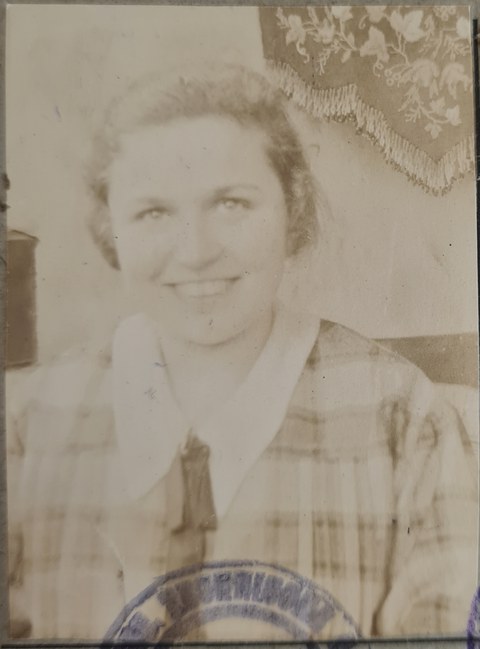Dr. rer. techn. Ingeborg Ginzel
Born: 28.10.1904, in: Dresden
Died: 14.11.1966, in: Lonon
Faculty of Mathematics and Physics
Academic title: Dr. rer. techn.
Ingeborg Ginzel was born on October 28, 1904 in Dresden, the daughter of the state director Dr. Alexander Ginzel and Margarete Gertrud Ginzel. From 1911 to 1914, she attended the 10th secondary school in Dresden. She then attended the girls' secondary school at the teacher training seminar from 1914 to 1918, which was a regular grammar school with an emphasis on mathematics and science. From 1918 to 1924, she attended the 6-level college in Dresden. After graduating from high school, Ginzel began studying insurance science at the Technical University in Dresden in the summer semester of 1924. During her studies, she spent the summer semester of 1926 at the University of Tübingen.
Ginzel received her first degree with the examination for insurance technicians on December 19, 1927. On June 13, 1929, she received her state teacher's examination in the subjects of pure mathematics, applied mathematics and physics. In June 1930, she submitted her dissertation Die konforme Abbildung durch die Gammafunktion , which appeared in the important journal Acta Mathematica in 1931. Further publications on this topic followed in the journal Deutsche Mathematik . Ginzel's work on conformal mappings was also praised after 1945. Her specific method for calculating the course of flow in boundary regions was also highly topical and of great practical relevance.
When Ginzel submitted her dissertation, she was initially a trainee teacher in the secondary school system in Saxony and passed the pedagogical examination for the secondary school system in the summer semester of 1930. She also continued to work academically.
During the National Socialist era, the chances of finding a permanent position in the higher education service were generally poor. For Ginzel, this meant a permanent switch to aviation research. She was initially employed at the Kaiser Wilhelm Institute for Fluid Dynamics Research, which opened in Göttingen in 1925. Between 1937 and 1949, Ginzel published ten scientific papers in Göttingen as well as joint articles with Irmgard Flügge-Lotz and Hubert Ludwieg. These dealt with the curvature properties of airfoils, the calculation of lift distributions, boundary layers and airfoil theory. The work published jointly with Irmard Flügge-Lotz (1939 and 1940) attracted particularly great attention. In it, the scientists dealt with a wing-rudder combination with a gap approximated by straight lines, which was emphasized several times in the following years. Ingeborg Ginzel later reported on her time in Göttingen: ""It was a world of men, but two or three women were accepted. Never in my career have I encountered any difficulty because I was a woman." (Dobbin 1958, p.5).
Together with other employees of the Aerodynamic Experimental Station and the Institute for Fluid Dynamics Research in Göttingen, she worked on compiling the results of German aeronautical research from 1939 and 1945, resulting in further publications in the Zeitschrift für angewandte Mathematik und Mechanik (1949). After the Second World War, all institutions in Germany that had been significantly involved in armaments research were closed, which meant another career change for Ginzel. Those who wanted to continue their work in aviation research had the opportunity to conduct their research abroad. In 1949, Ginzel was offered a position at the Admiral Research Laboratory in Teddington, near London. Four years later, she moved to Baltimore in the USA, where she worked as a senior engineer in the "Flight vehicles research department" and was regarded as a specialist in wing design.
A portrait published in The Sun magazine in Baltimore on July 13, 1958, not only shows the recognition Ingeborg Ginzel received for her research, but also provides an insight into the scientist's interests: she was interested in historical and philosophical writings and enjoyed visiting art collections. She also loved traveling and regularly visited her mother in Germany. After living and working in the USA for five years, Ingeborg Ginzel applied for US citizenship. She spent the last years of her life in London, where she died unmarried on November 14, 1966.

